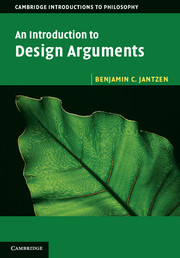Book contents
- Frontmatter
- Dedication
- Contents
- List of figures and tables
- Preface
- 1 Introduction
- 2 Preliminaries
- 3 Arguments from antiquity
- 4 Medieval arguments
- 5 The golden age of natural theology
- 6 Unusual design arguments
- 7 Hume
- 8 Paley
- 9 Darwin
- 10 Loose ends
- 11 The modern likelihood argument
- 12 Intelligent design I: irreducible complexity
- 13 Intelligent design II: specified complexity
- 14 What is complexity?
- 15 Supernatural agents and the role of laws
- 16 A brief survey of physical law
- 17 Fine tuning I: positive arguments
- 18 Fine tuning II: objections
- 19 Conclusion
- Bibliography
- Index
16 - A brief survey of physical law
Published online by Cambridge University Press: 05 June 2014
- Frontmatter
- Dedication
- Contents
- List of figures and tables
- Preface
- 1 Introduction
- 2 Preliminaries
- 3 Arguments from antiquity
- 4 Medieval arguments
- 5 The golden age of natural theology
- 6 Unusual design arguments
- 7 Hume
- 8 Paley
- 9 Darwin
- 10 Loose ends
- 11 The modern likelihood argument
- 12 Intelligent design I: irreducible complexity
- 13 Intelligent design II: specified complexity
- 14 What is complexity?
- 15 Supernatural agents and the role of laws
- 16 A brief survey of physical law
- 17 Fine tuning I: positive arguments
- 18 Fine tuning II: objections
- 19 Conclusion
- Bibliography
- Index
Summary
Viewing natural laws as artifacts
Most of the design arguments we’ve encountered focus on parts of the universe and argue that this or that part of the world could only have come to be the way it is because some intelligent agent helped make it that way. As we turn to consider the phenomena of so-called ‘cosmic fine tuning’, we will find that the focus shifts to the universe as a whole. Rather than worry about properties of things in the world, a fine-tuning argument for the existence of God emphasizes properties of the universe. Typically, the proponent of such an argument looks to the form of the particular physical laws thought to govern the unfolding of the universe, and in particular to a set of ‘constants’ that feature in these laws. The relevant intuition is that the laws would not have the form they do were it not for the will of an intelligent agent. In a sense, fine-tuning arguments attempt to establish that the very laws which shape and govern the universe are artifacts.
In order to assess the plausibility of fine-tuning arguments, it will help to have some idea of what is meant by a ‘physical law’ and what laws in particular are currently thought to govern our universe. This chapter presents a survey of the major physical laws invoked by design arguments. I won’t attempt here to give a philosophical characterization of what a law is – we’ll worry about that later. Rather, my aim is to present the laws that will serve in key premises in the next two chapters, and to do so in a manner accessible to the non-specialist. The reader who is comfortable with the basics of modern physics can profitably skip this chapter. Similarly, the reader who wishes to avoid all technicalities can leap ahead to Chapter 17 and still be able to follow the gist if not the details of the fine-tuning arguments. For everyone else, I offer this guide to modern physics in three short acts.
- Type
- Chapter
- Information
- An Introduction to Design Arguments , pp. 259 - 271Publisher: Cambridge University PressPrint publication year: 2014



